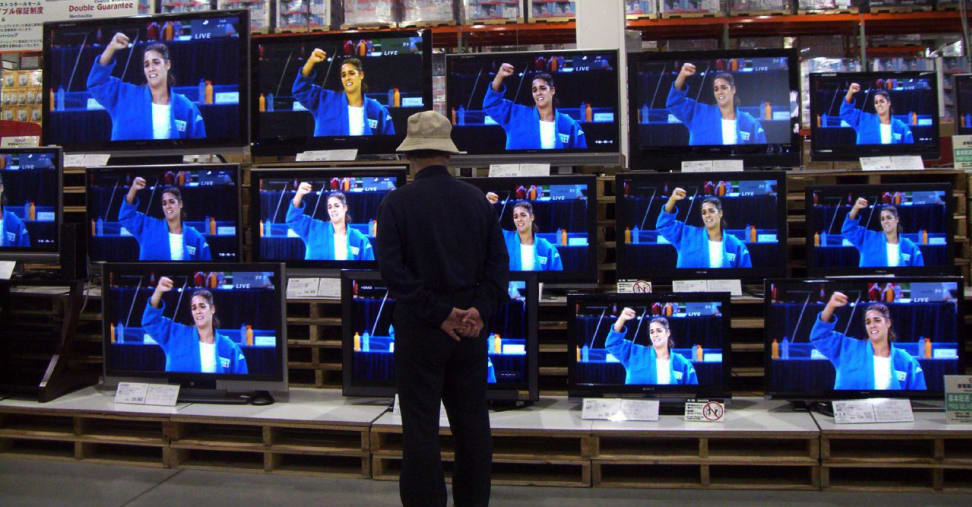Ask an Expert: The Smart Way to Buy a New TV
A few key steps can make the whole process smooth and easy.
 Credit:
Credit:
Products are chosen independently by our editors. Purchases made through our links may earn us a commission.
Recently, my father made it his mission to buy a brand new, big-screen TV for the living room. Three cancellations, two returns, and a shipping error later, he finally settled on the size and features he wanted.
Don’t be like my dad—the next time you buy a new TV, buy it like an expert.
As an ISF-certified calibrator and full-time TV reviewer, televisions are my life. So trust me when I say that whether you plan to buy online or at a big-box store, these key steps can make the whole process a lot easier.
What's In A Name?
Blind loyalty to a single brand isn’t smart, but there’s a reason you’ve heard of companies like Sony, Samsung, LG, Panasonic, and Vizio.
When you buy a name-brand TV, image quality, build, and lifespan are usually what you’re paying for. If an off-brand set’s price seems too good to be true, it probably is.
It’s an open secret, however, that name-brand manufacturers produce multiple “series” each year. Screen sizes and features vary from series to series, but overall picture quality tends to trickle down from premium models to cheaper sets.
For example, if the hypothetical “A Series” is 3D-capable, internet-ready, and gluten-free, you might only need the (also hypothetical) “C Series,” which boasts similar picture quality without all those bells and whistles.
Don’t let flashy marketing drain your wallet. Make a list of what you want or need in a new TV before you even start shopping, and don’t let slick ads convince you to pay for features you’ll never use.
The Spec Check
Despite the buzzwords adorning their boxes, virtually all TVs on the market today (rare, expensive OLEDs aside) are the same basic type: LCD. Everything else is a refinement on that fundamental tech.
“LED” simply refers to the light-emitting diodes that illuminate the LCD panel. Your TV needs both to work its magic.
“Ultra-HD” or “4K” is strictly to do with resolution. UHD displays have four times as many pixels as Full HD (1080p) TVs. That’ll be awesome for everyone in a few years, when content catches up, but for now it’s best for early adopters.
“Smart” branding means that a TV can connect to the Internet. This has nothing to do with picture quality and everything to do with features like web browsing and built-in streaming apps.
Numbers like 60 or 120 Hz describe a TV’s refresh rate—how smooth the image appears. If you mostly watch movies, TV, or Netflix, 60 Hz is more than enough. If you’re an avid gamer or sports lover, look for a 120 Hz set.
On the other hand, terms like “CoolMotion 920” and “Master Contrast Booster” (again, hypothetical) are pure marketing fluff. If a feature sounds like a comic book superhero, it’s best to ignore it.
Actually, Size Does Matter
Because TV sizes are reported diagonally, a 50-inch TV isn’t actually 50 inches wide; it’s closer to 44 or 45. Measure your TV stand and viewing space so you know the maximum dimensions you can work with. Exact dimensions for every TV are online, so there’s no excuse for ending up with a TV too big for your space.

No matter what your living room looks like, you can calculate your ideal TV size using a simple formula. Photo credit: Flickr user John Maher (CC BY-ND 2.0)
If you aren’t sure what size you need, here’s how you figure it out: Your ideal diagonal screen size for a Full-HD TV is 7.5 times your viewing distance (in feet). Just measure from your TV to where your head will be, multiply by 7.5, and that’s your screen size.
This means that the optimal viewing distance for a 50-inch HDTV is 6–7 feet, while you’ll want 8–9 feet for a 65-inch HDTV.
For 4K TVs, it’s a different ballgame. You can basically double the size of your TV, or sit twice as close, without seeing a pixelated image.
Buy For Your Room, Not Best Buy's
Chances are, your house is nowhere near as bright as a big-box store. Unless the shop has a dedicated “home theater” viewing area, it’s useless to shop there with your eyes.
This is one reason why plasma TVs died out, despite offering superb picture quality. They were bright enough for the typical living room, but looked washed out next to the hyper-bright LCDs at Wal-Mart.
The truth is, unless you like to watch TV with lots of windows open or lights on, you don’t need the brightest TV.
Ask store staff if you can change the picture mode to “Movie,” “Cinema,” or anything with “ISF” in the name. These are the most accurate picture modes, and they’ll give you a more realistic idea of how things will look at home.
The Takeaway
To summarize:
- Unless an off-brand set's price is just unbeatable, avoid anything that doesn't have an MSRP.
- Almost every TV in stores uses LCD technology; "smart," "3D," and even "4K" don't necessarily mean a better picture.
- Measure your viewing space and calculate your ideal TV size. Don't consider anything that doesn't fit.
- Remember that your living room is much darker than a retail store. The brightest set on the shelf likely isn't the one you want.
As with any prestige product, it’s very easy to buy a bigger, fancier TV than you actually need. When in doubt, remember: A new TV should fit your specific viewing space, your specific viewing habits, and your specific price range—not the other way around.
Hero image: Flickr user "akaitori" (CC BY-ND 2.0)
